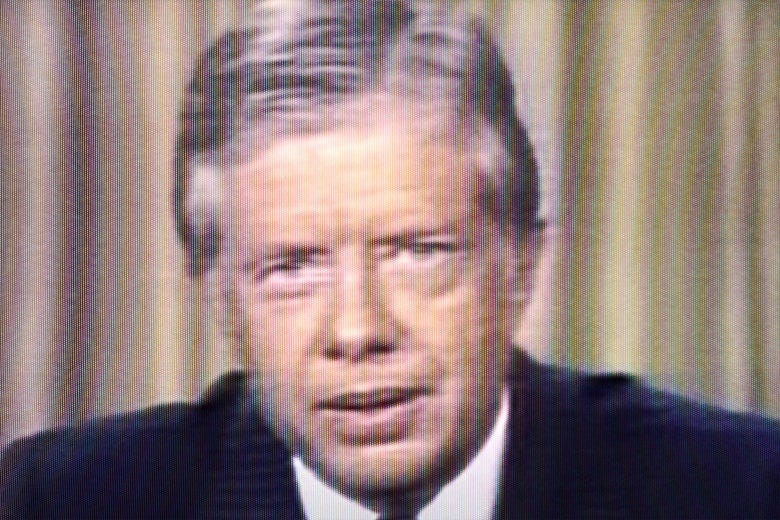
On July 15, 1979, President Jimmy Carter addressed a nation that was being battered by record inflation, an energy crisis, and a deep distrust in the government following Watergate, to instead speak about a deeper issue: a crisis of confidence.
During his speech, which would later discuss more specific solutions, President Carter changed the framing of these issues to something more abstract, asserting:
“The threat is nearly invisible in ordinary ways. It is a crisis of confidence. It is a crisis that strikes at the very heart and soul and spirit of our national will. We can see this crisis in the growing doubt about the meaning of our own lives and in the loss of a unity of purpose for our nation. The erosion of our confidence in the future is threatening to destroy the social and political fabric of America.”1
If any of this sounds familiar, that’s because it is.
In the 2024 election, the economy continued to be a top issue on voters’ minds, specifically concerning inflation. Not only that, but there has been a growing sentiment to dismantle the establishment within the government — which comes off the heels of fraudulent claims of a stolen election and even greater levels of distrust among the electorate.
What distinguishes the past from today aren't the issues, but rather the messages that political parties are giving.
While Republicans have effectively addressed these worries by both pinning them to the Biden administration and federal bureaucrats, as well as expanding their outreach by appearing on numerous alternative media outlets, the Democrats find themselves in disarray.
In a time when Americans felt abandoned by their government, President Carter — a Democrat — offered them humility and honesty rather than more empty platitudes and unfulfilled promises, and it was well-received by the public! The Democrats of today, on the other hand, are having an extremely difficult time finding a coherent, unified position following their defeat to Donald Trump.
“Malaise” Today
As the dust continues to settle from the whirlwind that was the 2024 election, many political pundits, news outlets, and experts are still scrambling to find out what exactly happened — and, more importantly, what needs to change. From calls to embrace populism, to arguing that the Democrats failed in their media outreach, everyone seems to be on the same page: there needs to be a fundamental shift within the Democratic Party.
Upon closer inspection, however, this reaction appears to be more of a knee-jerk than one that’s calculated.
While it’s true that President-elect Trump was ahead of Vice President Harris by 5 million votes in the popular vote just after Election Day, his lead has since shrunk by over half of that — just under 2.4 million votes. While that still sounds like a large difference, it’s actually a smaller margin than Hillary Clinton had over Trump in 2016 (1.55% in 2024, compared to 2.1% in 2016). Additionally, this result was always considered to be a possibility. Nate Silver’s model, for instance, considered this to be the most likely outcome, and as I had mentioned before, polling before the election demonstrated that either candidate could’ve had a sizable victory in the Electoral College.
Although something must change for the Democrats to win, the closeness of this race indicates that it doesn’t necessarily have to be a tectonic shift. Instead of changing the foundational values of the Party, there should be more of a focus on delivering the most authentic and effective messages to voters. Meet them where they’re at. Speak to their concerns directly.
Both the Biden and Harris campaigns made good efforts to do just that, but ultimately fell short. The Biden campaign attempted to temper economic distress by showcasing the various accomplishments throughout his administration, and the Harris campaign catered to the overwhelming sentiment for a change in leadership. But the voters just weren’t buying what they were selling. For one reason or another, their messages just weren’t sticking.
But what if they took a page from President Carter? What if they had a message that was more tailored to the underlying “malaise” of Americans?
In Biden’s case, instead of constantly talking about what he had done, he could have mentioned more of what he was going to do. As for Harris, she could have been more vocal on policy instead of just relying on being a fresh face. More than that, both candidates could have benefited from speaking to the deep divisions within the American electorate beyond political partisanship. By speaking directly about the work left to be done, such as addressing high grocery prices, perhaps voters would have been more supportive. But it’s difficult for them to support a candidate that’s either downplaying their struggles or seemingly offering nothing of substance.2
President Carter was faced with largely similar challenges, and yet his "Malaise Speech” was met with an outpouring of support. His failure to win reelection in 1980 wasn’t due to voters not resonating with what he was saying. Rather, it was his inability to live up to that message that led to his defeat.
Maybe it’s time that Democrats dust off that old playbook and combine policy with passion to not just turn out votes, but to inspire Americans about a bright future.
Full transcript of President Carter’s “Malaise Speech.”
Kamala Harris did have some economic policies during her campaign, but they were often irrelevant to the broader electorate (e.g., tax credits for small businesses) or put down all together (e.g., anti-price gouging measures).




